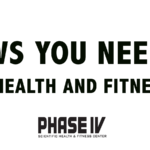Healthy Running Step by Step By Robert Forster, PT and Roy Wallack
Healthy Running Step by Step will help runners of all ages and abilities understand the science behind every aspect of running: training program design, running technique, nutrition, recovery, flexibility and strength training and why running injuries occur, how to prevent them, and how to speed up recovery.
Injuries plague the majority of runners, wrecking training plans and cutting running careers short by decades, but they are not inevitable.
Authors Robert Forster, P.T., and Roy M. Wallack explain that nearly all running injuries can be rehabilitated quicker and even avoided altogether with the right training, strengthening, stretching, running form, and diet strategy. Drawing from Forster’s three decades of training and treating Olympic athletes and more than 10,000 runners, cyclists, and performance athletes at his award-winning Santa Monica, California, physical therapy and high-performance centers; this book emphasizes that better performance is inextricably bound to injury reduction and that a comprehensive, science-based training plan with built-in anti-injury “insurance” must include these crucial elements: Periodization training, Proper technique and footwear, Nutrition, Posture and flexibility, and Strength training.
This book also includes detailed, step-by-step rehabilitation matrixes for the five most common running injuries: IT band syndrome, Achilles tendonitis, shin splints, plantar fasciitis, and hamstring injuries. Using these unique matrixes as your guide, you’ll recover from injuries more quickly and understand what you need to do to prevent their reoccurrence.








